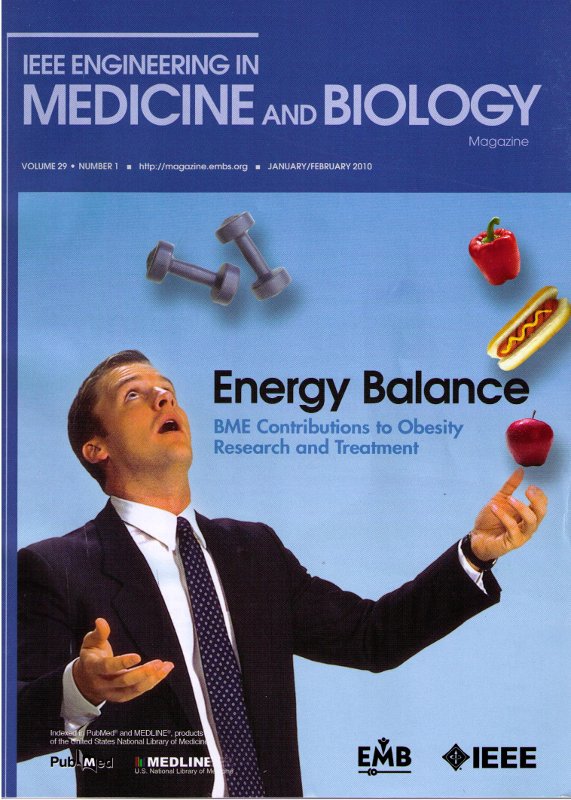 January/February 2010 issue of IEEE in Medicine and Biology Magazine is dedicated to the theme of Energy Balance. The introductory article contains description of work performed in our lab: both on energy expenditure (the shoe-based monitor) and energy intake (the food intake monitor).
January/February 2010 issue of IEEE in Medicine and Biology Magazine is dedicated to the theme of Energy Balance. The introductory article contains description of work performed in our lab: both on energy expenditure (the shoe-based monitor) and energy intake (the food intake monitor).
The project on monitoring of physical activity and energy expenditure won the Bluetooth Innovation World Cup 2009! The competition included more than 250 entries from all over the world. The winning project stems back to the original sensor shoe. The device is now being commercialized by Physical Activity Innovations LLC under a grant from the National Institutes of Health.
 IEEE Sensors journal selected a collage that represents self-powered sensors described in our paper "Self-powered sensors for monitoring of highway bridges" published in this issue.
IEEE Sensors journal selected a collage that represents self-powered sensors described in our paper "Self-powered sensors for monitoring of highway bridges" published in this issue.
(Click the picture to view full-size)
 High-Tech Bridge Safety
High-Tech Bridge Safety
In a nation with almost 500,000 bridges and overpasses the U.S. Federal Highway Administration estimates that approximately 25 percent of the structures are classified as either structurally compromised or obsolete. Researchers surmised that placing electronic sensors on bridges could transmit essential data to FHA monitors reporting on the structural integrity and general overall health of the bridges.
 Car - Powered Bridge Monitor
Car - Powered Bridge Monitor
As was demonstrated dramatically last summer with the collapse of a highway bridge in Minneapolis, annual visual inspectioris are not sufficient to make sure static spans don't start to become, well, dynamic. Continual monitoring using remote strain sensors has been promoted as a solution.
 Feel the vibration
Feel the vibration
A sensor for use on bridges that is powered by the vibrations
of vehicles passing overhead has been developed by researchers at Clarkson University in Potsdam, USA. The device,
which measures temperature, humidity, light and pressure, could function for years without requiring maintenance or battery
replacement.

